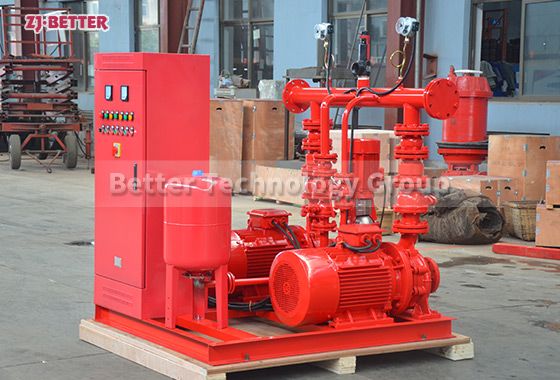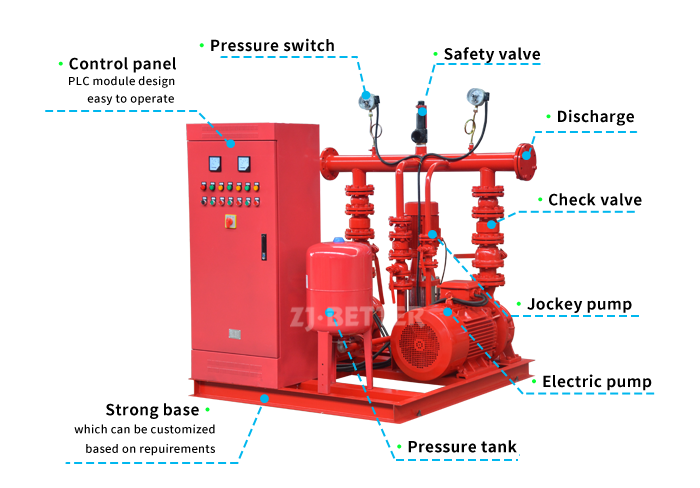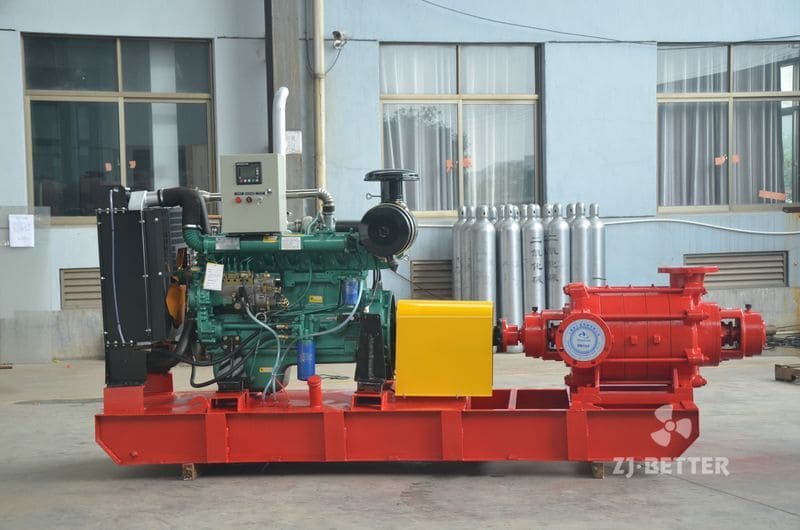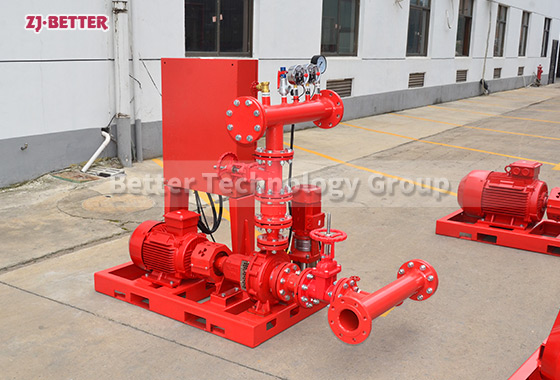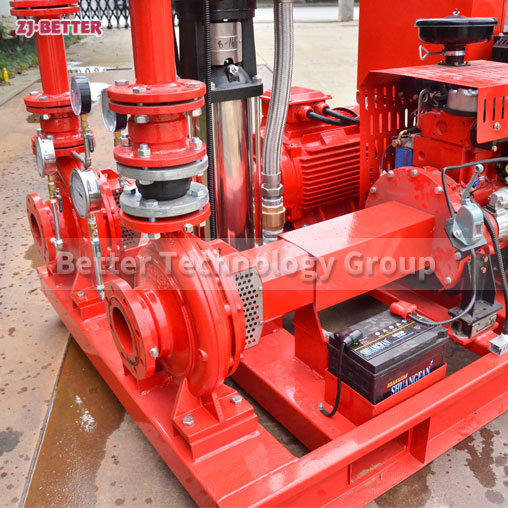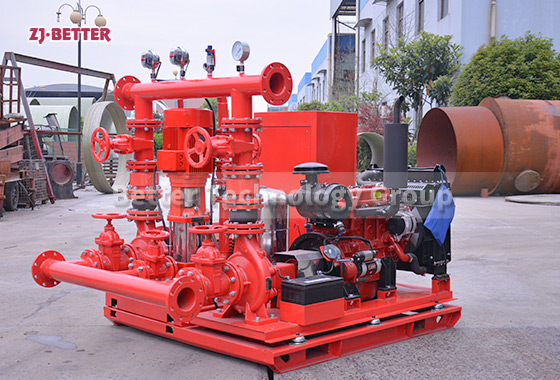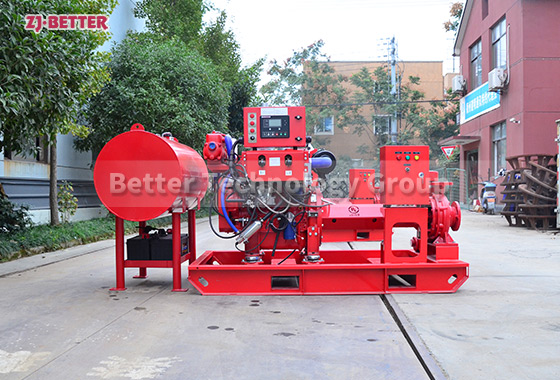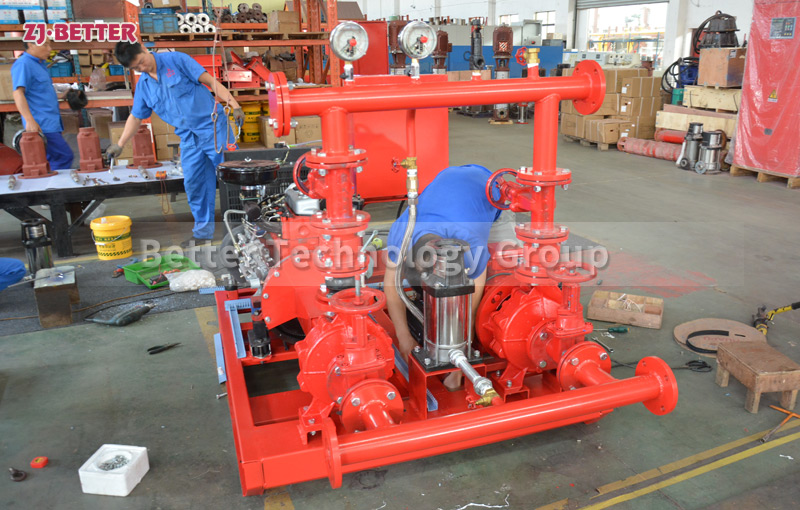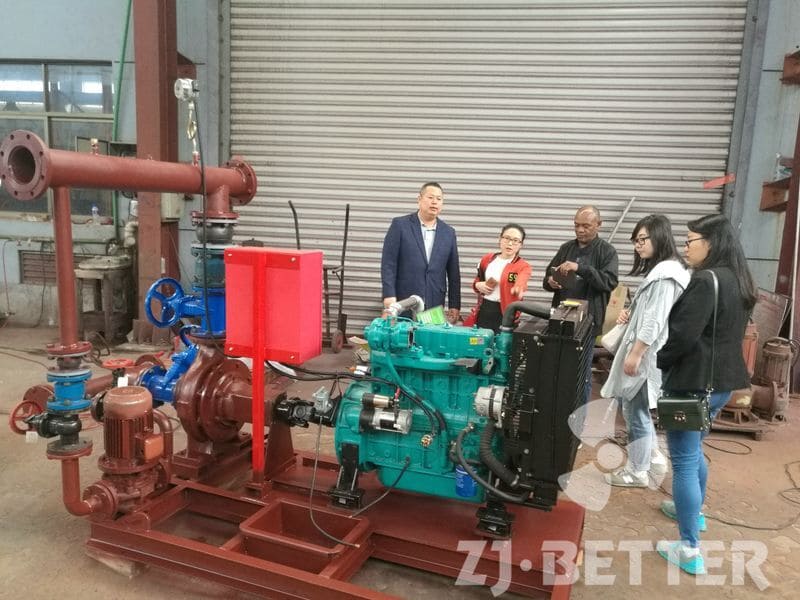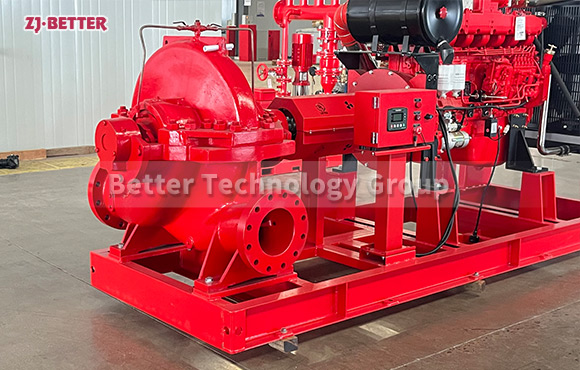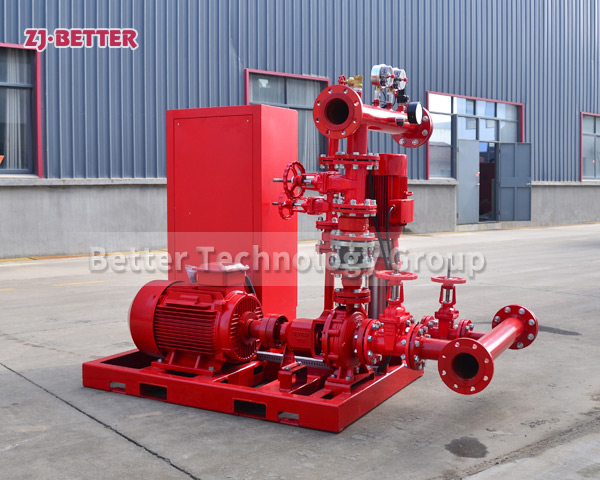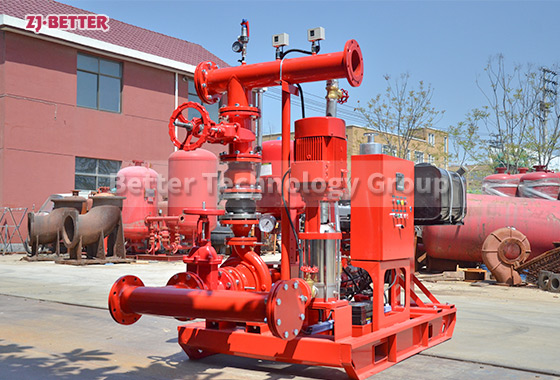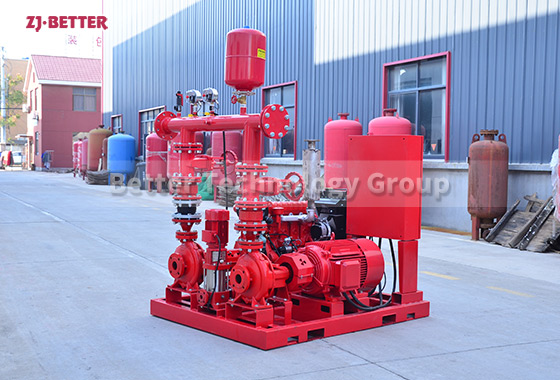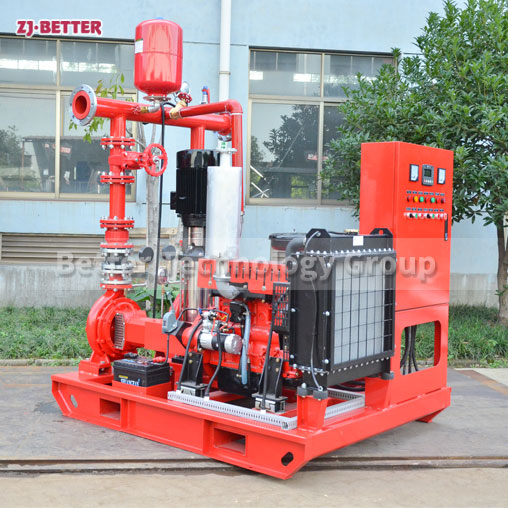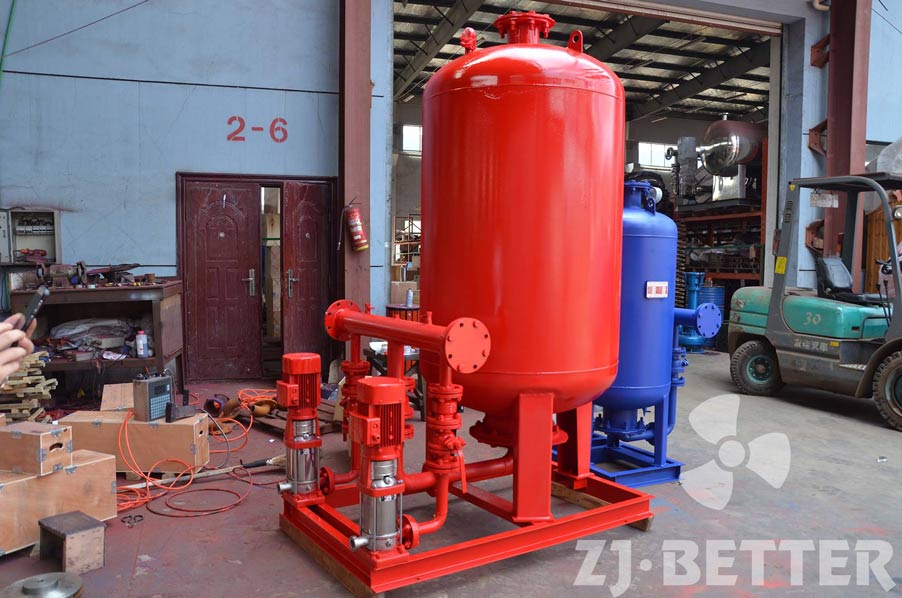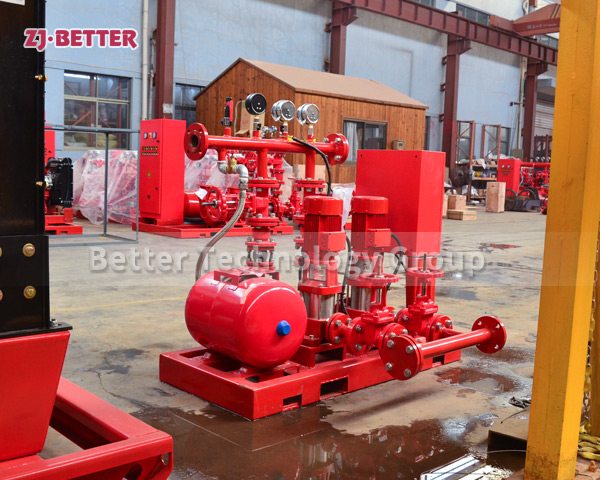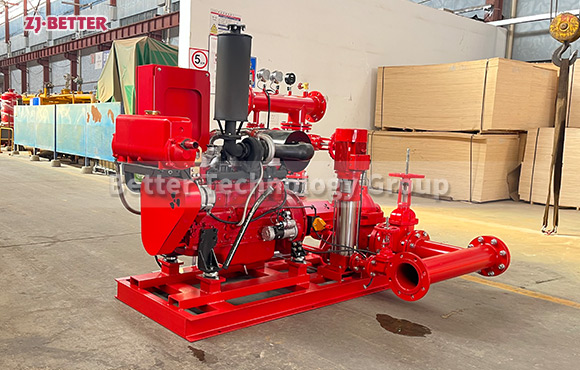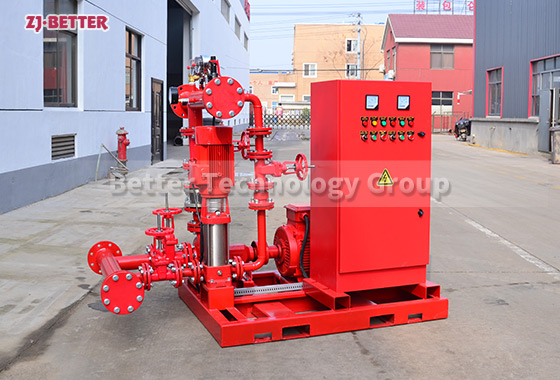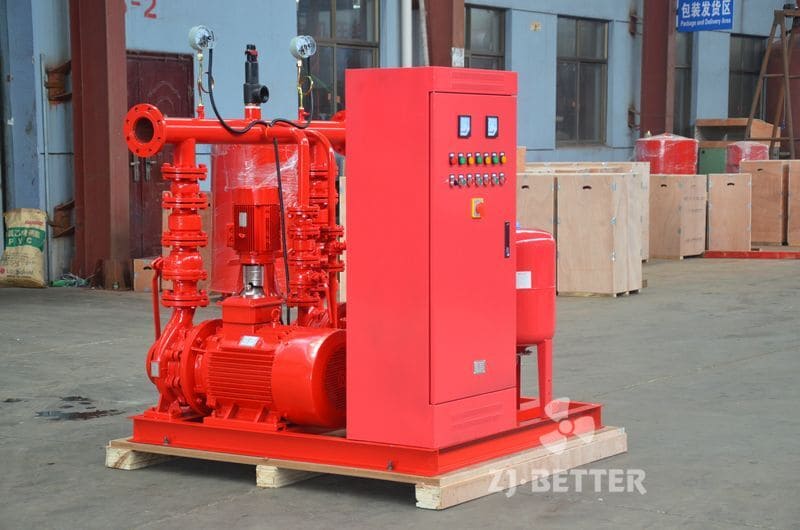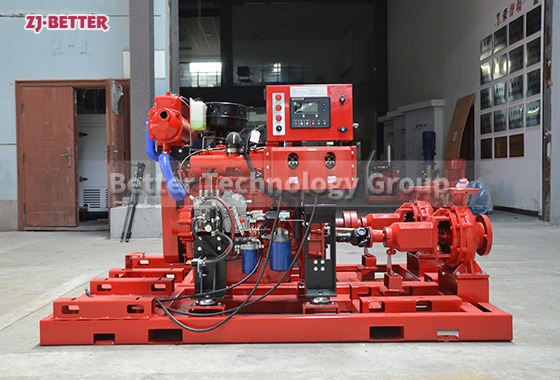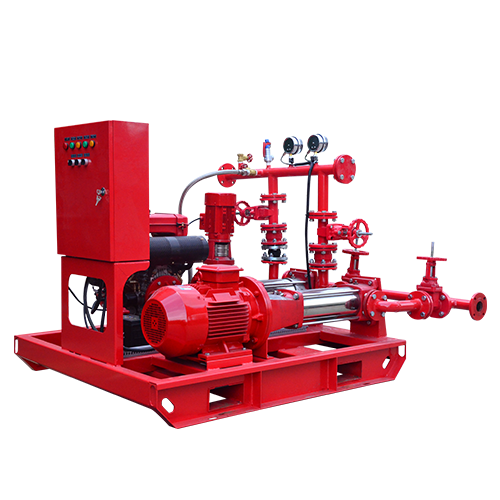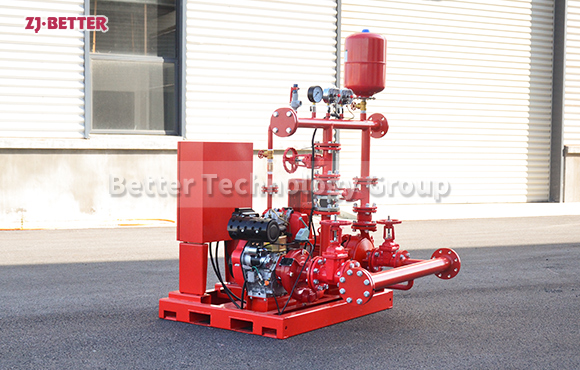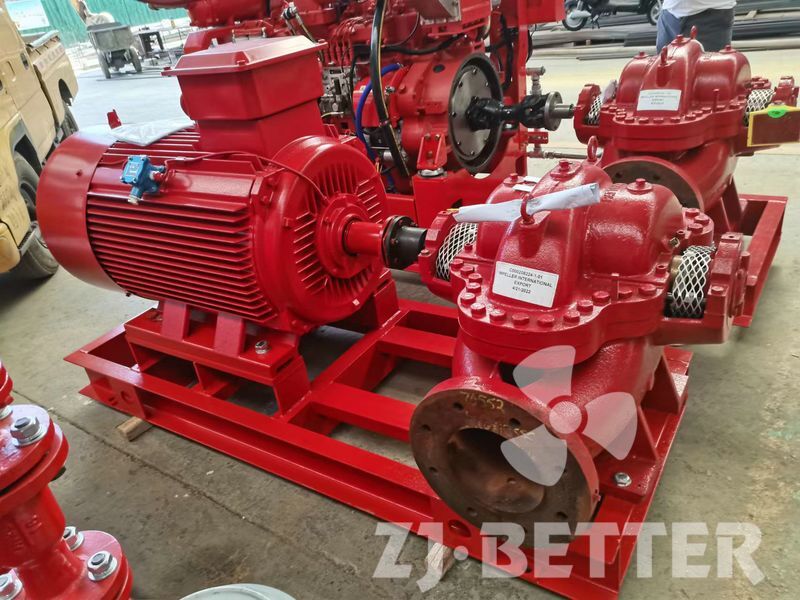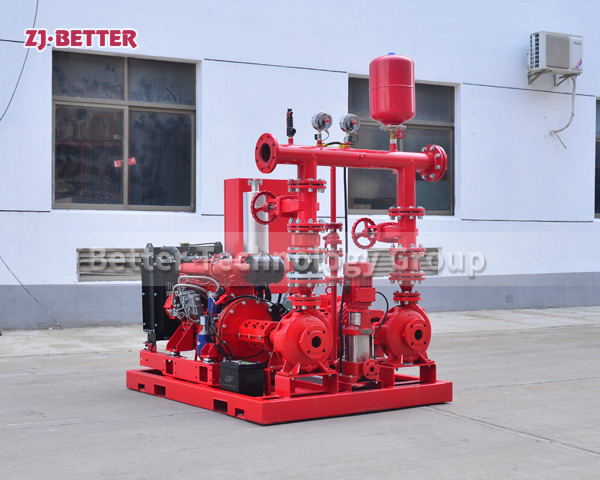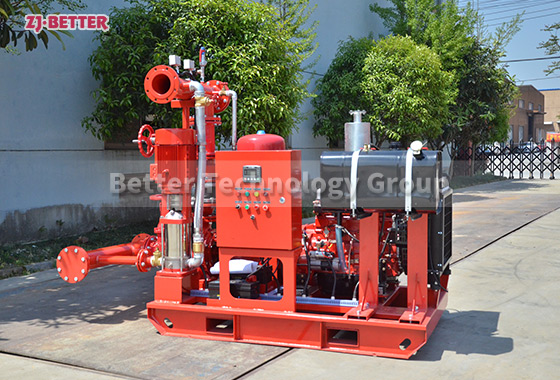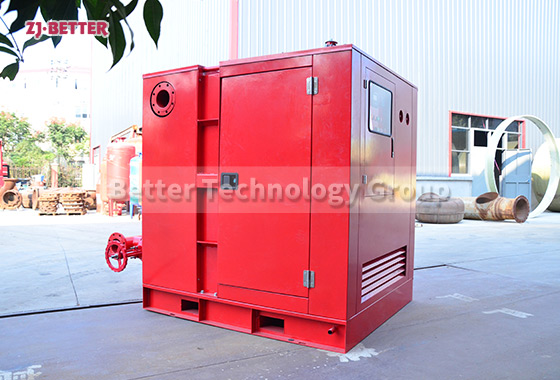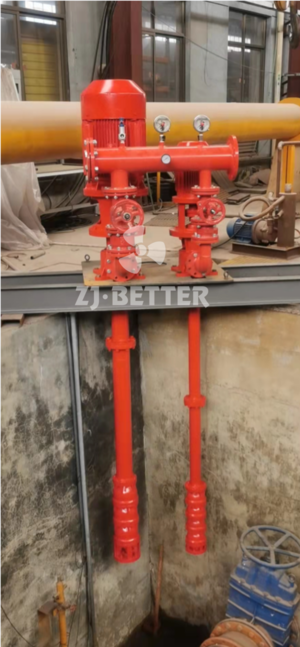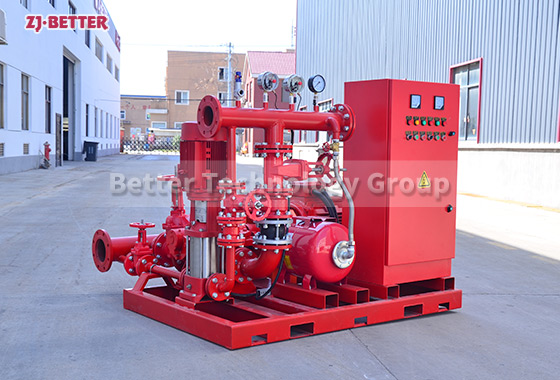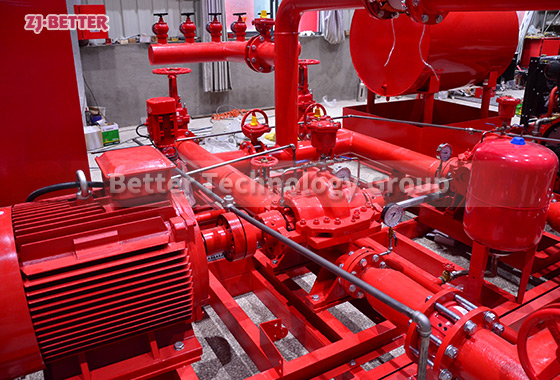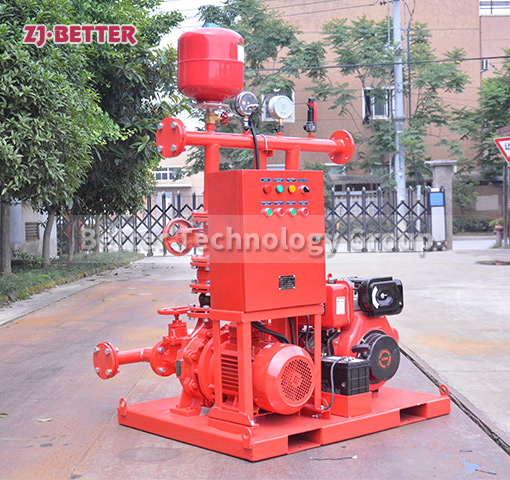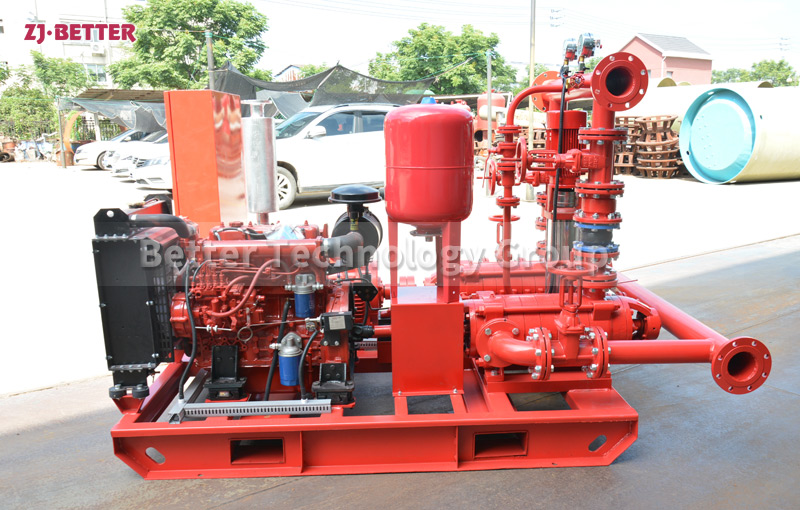Efficient and Dependable EEJ Fire Pump Assemblies
1.Flow: 50-5000GPM
2.Head: 3-20Bar
The EEJ Fire Pump System is an innovative solution designed to enhance fire safety in various settings. With exceptional performance and efficiency, the EEJ Fire Pump System delivers high pressure and large flow capacity, enabling rapid and effective fire suppression.Overall, the EEJ Fire Pump System is a reliable choice for safeguarding lives and properties, making it an ideal fire protection solution for commercial buildings, industrial facilities, and residential areas.
Types of pumps include: End Suction Pump, Split Case Pump, Vertical Inline Pump and Vertical Turbine Pump.
- Electric motor driven pump, can use single stage pump, horizontal split case pump, end suction pump,multistage pump.
- 2. Jockey pump, horizontal or vertical, capacity will be small, but head should be higher than electric anddiesel engine pump.
- 3. Control panel: Auto Control of electric pump, diesel engine pump and Jockey Pump with overload, overcurrent protection.
Overall, the EEJ Fire Pump System offers the advantages of reliable operation, high performance, corrosion resistance, intelligent control, and versatile application. These features make it an exceptional choice for enhancing fire safety and protecting lives and properties in diverse settings.

